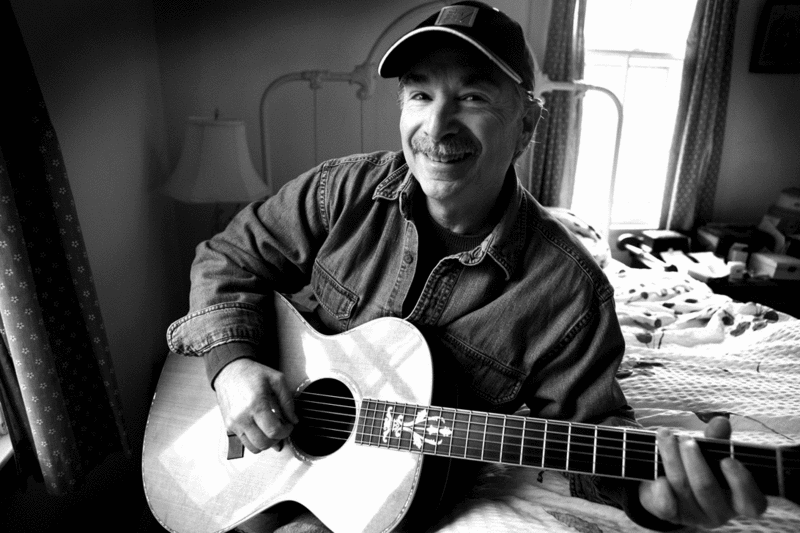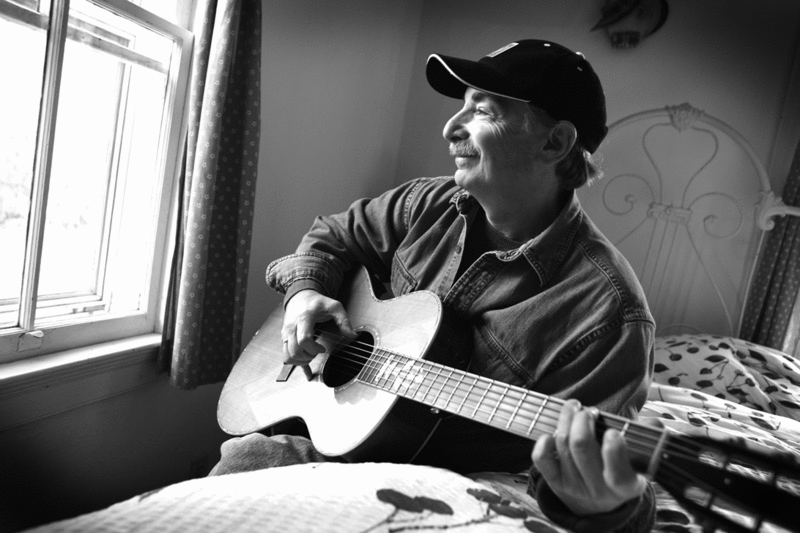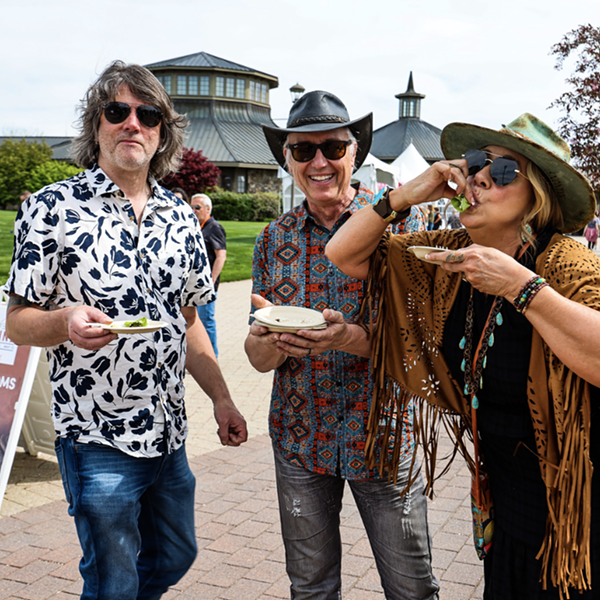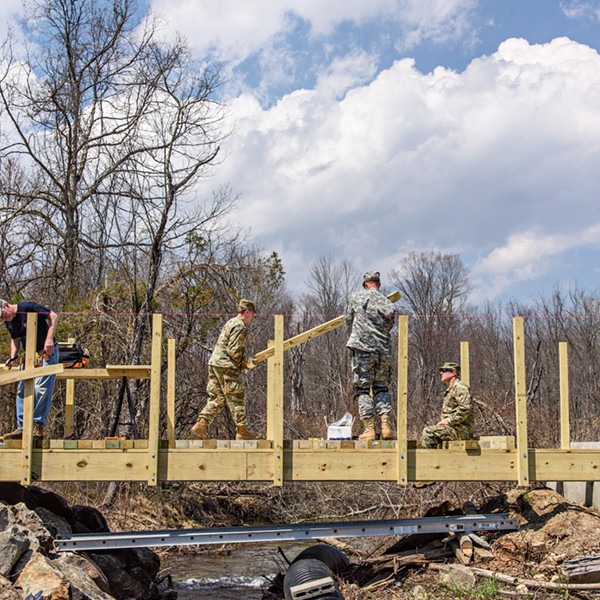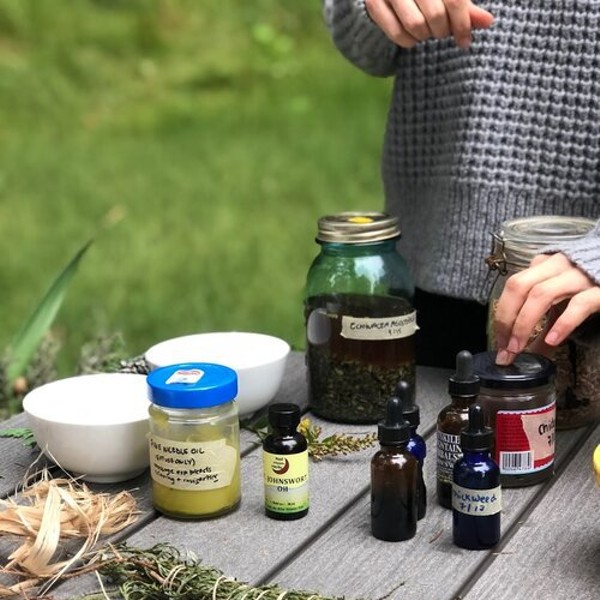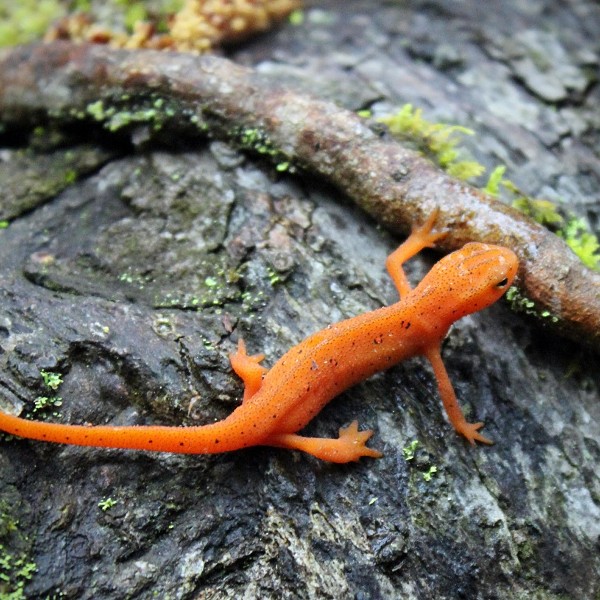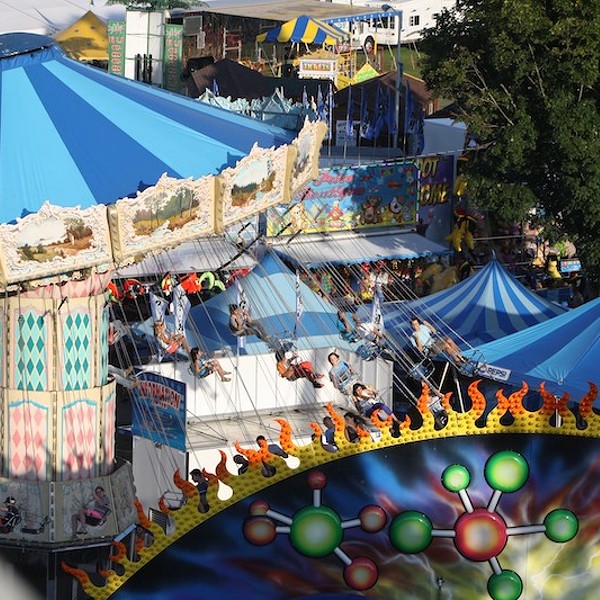“I suggest you bring food with you. There’s nothing, and I mean nothing, to eat between Bakers Mills and Edwards.”
I took the warning seriously. It came from Tom Akstens, a wicked finger-picker and Adirondack fisherman who plays with Chris Shaw and me about twice a year, in our band Big Trout Radio. We sing fishing songs, an odd niche to be sure, but we play gigs for a chance to hang out together. The less we perform, the more notoriety we seem to get, proving the Utah Phillips maxim that “a genius is an ordinary man 50 miles from home.” Edwards, New York, is in the Adirondacks, 249 miles from where I live in Ulster County, so I figured I’d have the intellectual stature of Stephen Hawking by the time I got there. I packed two Cortland apples and a pint of water for the ride.
“It’s quiet up there,” Chris Shaw confirmed. Chris is also a fly-fishing fanatic who knows every hidden pool within 100 miles of Albany. He delivers lines with a slight James Stewart drawl, as though he just stepped out of Cheyenne Autumn. He’s a folk singer and storyteller who can tell you about raids during the French and Indian War or the best blueberry pancakes in Bolton Landing. Sometimes the two topics wind up in the same sentence, like “General George Howe made serious tactical errors in 1758, got himself killed at Ticonderoga, and they serve real maple syrup at Dot’s.”
Some years ago, Chris bumped into Eric Clapton at Ellsworth’s bait shop just south of Lake George. Clapton had fly-fished the area for a week without mentioning he was a rock star. Since no one recognized him, he was known among the locals simply as “Eric from England.” Clapton recently told Larry King, “Fishing became a transfer obsession” that took the place of drugs and alcohol. At one point, Clapton was booking tours so the gigs were close to good trout streams. It was inevitable that Clapton’s secret would get out—he played a huge concert in Saratoga that week—and he treated his fishing guide’s family to a limo ride and passes to the concert. Clapton’s demeanor impressed Chris. “He’s a fishing guy,” he explained.
I don’t fish. I haven’t done it since I was a kid, when my dad took me from the Bronx to misty lakes upstate and in the Berkshires. I hate hooking a trout, watching it flop helplessly on the rowboat slats, dropping it half-dead in a creel. I understand why fishing fans are so passionate. Real fishermen are amazing to watch. They become part of the stream, casting flies in a ballet of toss, return, and toss again. But waking up at 5am, standing knee-deep in a frigid stream, and slapping mosquitoes isn’t my cup of tea.
But I knew a few songs about angling, like “Fishin’ Blues,” “Deep River Blues,” and “Crawdad Song,” from my folkie days in Greenwich Village. And five years ago, I had the bright idea to record a CD of fishing songs. But songs about fishing are few and far between. So Akstens, Shaw, and I wrote a bunch more, which we recorded with John Sebastian, John Kirk, Cindy Cashdollar and my brother, Happy Traum. At rehearsals, we “spawned” dozens of puns about “getting hooked,” “scales,” “sinking fast,” and “heading downstream.” The songs became metaphors of life itself. We loved the way the CD turned out, but it flopped around for a while before expiring. Fishing fans don’t like folk music. Folk music fans don’t like fishing. You’re probably starting to understand why we have to travel five hours for a gig.
On an unusually warm late-September morning, I piled a few guitars into my Highlander, spent $52.76 filling the gas tank, and rolled up the Northway. The trip to Edwards took the better part of forever, time to reflect and watch and think. Tom, Chris, and I have survived more than our share of folk festivals, clubs, and concerts. In our separate careers, we’ve played a few thousand gigs from Albany to Tokyo. Trekking through the Adirondacks brought on some reflection about our past, the music scene today, and where it’s heading.
“I don’t know how kids get started performing these days,” said Chris, shaking his head. “Or how they get tapped into traditional music. There was a time we could head over to Caffe Lena in Saratoga Springs to hear all the old blues guys.... ”
Tom jumped in. “I remember one Tuesday night in the 1970s, wondering if I should see Mississippi John Hurt at Lena’s, Doc Watson in Woodstock, or Big Mama Thornton in Albany. I thought, ‘What the hell, I’ll stay home.’ Like you could see them anytime.”
We entered the Adirondacks at Warrensburg, a town that’s been trying to gentrify for decades, but never gets beyond Carhartt clothing and diners that serve eggs fried in hydrogenated oils. From Warrensburg, Route 28 heads northeast, skirting the Hudson River, dipping past North Creek, and going through the center of Long Lake. The road rises into the Adirondack Park, with its granite ledges, tall stands of spruce, and the occasional 1950s motel.
“It’s the land of toy birch canoes and rubber tomahawks,” Chris says. At gift shops, an eager tourist can find potpourri, repro tin signs that say “Polar Bear Ice Cream,” and Korean-made snow globes. The Adirondacks have had their heyday, which cycles around every so often as waves of urban escapees, hippies, and hikers descend on the mountains.
“It seemed the glory days of the folk, rock, and jazz boom would last forever,” Tom says. It’s true. If you were a music fan between 1961 and 1995, you could see back-porch pickers, Chicago blues guys, and jazzers almost anytime. Almost all the Mississippi and Louisiana blues singers and early country artists have passed on. No one today has the feel of Skip James or Lightnin’ Hopkins. If you weren’t lucky enough to experience their music firsthand, it’s hard to describe, like comparing apple pie made from scratch to something in the frozen-foods case.
There’s no lack of talent or great music these days. If anything, kids are smarter, know more, play better, and sing in pitch. What changed was the cultural setting that allowed the music to thrive. Like an old motel with green shutters and a neon sign of a beaver’s head, so-called “American roots music” feels slightly out of place. In that regard, it may seem like a contradiction to say the influence of blues, folk, and jazz is everywhere, but I believe it will never go away and, like these Adirondack peaks, will continue to draw people to it in cycles of love and abandon.
Around five in the afternoon we rolled into Edwards, which was smaller, poorer, and bleaker than I’d imagined. It was unusually hot. A few people sat on their porches, watching the potholes. Other folks were putting their gardens to bed, mowing lawns, firing up barbecues. It was a scene out of a John Mellencamp song, a bit of America engaged in small-town life.
Sound check was a jumble of cables, apologies from the sound guy, feedback, and a two-aspirin headache. For all that, though, the Edwards Opera House, located in the Edwards Town Hall, is a unique and extraordinary venue. The original town hall was destroyed, along with much of the rest of the town, by a fire on July 4, 1892. The ambitious new town hall was made of sandstone and marble, with a Victorian theater on the second floor. The ornate wooden beams that span the ceiling give the room the impression of an upside-down ship’s hold. The stage is backed by an antique, oil-painted drop depicting a rural scene of cows and fields. On April 6, 1897, a newspaper article noted that “Great satisfaction is being expressed in the work of Mssrs. Yerance and Berry, the scenic artists, who are painting the scenery.” (The backdrop, and the rest of the hall, are pictured on the cover of Texas singer Eliza Gilkyson’s latest CD, Your Town Tonight). The Edwards Opera House is about as charming and intimate as it gets, and the old wood creates an excellent acoustic field.
Like many small-town gems, the Edwards Opera House was abandoned and neglected for decades. Now, with little fanfare, opera houses like this are making a comeback. The venues struggle to raise money, constantly looking for patrons, grants, or small miracles to keep them going. Most of these venues feature older folkies and acoustic blues acts like Geoff Muldaur, Jay Ungar & Molly Mason, Chris Smither. I’ve been pleased to see some younger bands like the Mammals and Olabelle on some listings. But where are the high school- and college-age performers?
Some hints came from the members of our gray-haired audience, who dotted the seats here and there. It wasn’t a great turnout, although all of us have been known to sell out shows in the North Country in recent years. Acoustic music is hit-and-miss these days. I’ve met several college-age musicians who absolutely worship The Band, Dylan, The Grateful Dead, and Crosby, Stills and Nash. But they’re not likely to come to folk shows. It seems kids often choose computer screens over real, live music. And perhaps it’s not that easy to drive to a place like Edwards, plop down 40 bucks on a date, and make it home safely on the back roads. These are practical matters, but it’s probably a deeper issue than that. When I was 16, I’d take the subway for an hour under Manhattan to see Pete Seeger, Howlin’ Wolf, John Coltrane, and Richard Pryor at clubs in Greenwich Village. I found a way to get there because it was important to me. Likewise, when Happy and I toured in Japan last year, there were many teenagers in the audience. Yes, we were 6,000 miles from home, which as I’ve noted earlier, certainly gave us more appeal.
Whether you’ve played for thousands of fans or a handful, if you’re a pro, you know enough to give your best performance each time. After all, folk music was originally played on porches and living rooms not unlike the ones in Edwards. So, after a dinner of American cheese on white bread, slathered in mustard and mayo, we jumped into our set with all the energy we could muster.
Chris kicked off the show with “I’m a Goin’ Fishin’,” which talks about grabbing a day on the stream. Then Tom told the story of how we were lost in the Adirondacks a few years back when we heard a 10-watt, “all-fishing, all-the-time” radio station coming across the car radio. The audience listened intently. I’m not sure they knew the story was a put-on, although the mention of a Studebaker with disc brakes did bring scattered chuckles.
I played my song “Big Old Trout,” which owes more than a little to Herman Melville and the whale that obsessed Captain Ahab:
About 20 years
Just as clever as a trout can be
He lives in a pool on a mountain stream
I think he must have psychic ability
I look at him, he looks at me
I know that I met my match
With his giant fins and big brown eyes
He’s a fish I just can’t catch.
And then, after an hour or so, it was over. People left quickly. I signed a few CDs and walked to the parking lot. Some crickets chirped and then became silent. The night smelled of ripe apples and cool northern air.
“It’s pretty quiet after the sun goes down,” I said to the guys.
“Come back in February,” Chris said, “when it’s frozen solid.”
It occurred to me that an opera house with live music in the middle of nowhere is literally a light in the wilderness.
It was a long drive home, with miles of quiet highway until Saratoga Springs. Then there were headlights, hundreds of them, speeding toward Albany. In his song “Gaia,” James Taylor describes traffic as a “foolish school of fish on wheels.” The traffic got so thick by the time we reached Albany, I thought I was on a California freeway.
In Los Angeles today, bands starting out literally have to pay to play at clubs. That may be why so many young musicians record directly into their computer and post music on MySpace or YouTube. If the song is good enough or weird enough it might get thousands of Internet hits. A kid in Edwards can do this as easily as anyone, and potentially reach an international audience. But it’s not the same as a gig or a jam session with real musicians. Live music has always been at the heart of American culture, from garage bands to jazz players in late-night clubs to R&B rocking a juke joint in Mississippi. Small-town America produced some incredible musicians in the old days, men and women who hit the road and found their audiences in other small towns. Some of us still believe in that method of reaching fans, and we’ll slog down a long highway to do it. The idea of getting fresh music out into the world sometimes seems as remote as Edwards. But at the end of the road, with luck, you may finally arrive.
Artie Traum is an award-winning guitarist who has been featured in more than 35 albums and has toured throughout the world. He has produced recordings for Tony Levin, John Sebastian, Livingston Taylor, Happy Traum, and many other artists.







